Cleaning in the old days was not only a never-ending job, it also didn’t always work. Without modern appliances and detergents stains and dirt could permeate one’s clothes or household objects only to be trapped there for good. But, they were not ones for throwing anything out prematurely. Instead, they found many clever ways to simply cover the dirt and go on with life.

Laundry Bluing
Any white clothing was bound to turn yellow over time – even if you somehow avoided spills. Sweat and the natural oils from skin can turn fabric yellow pretty quickly. To counter the effects it was once common to use laundry bluing to lend the slightest blue tint to the yellowed item. The blue counteracts the yellow and makes it look white again, a tactic still used in some cosmetic procedures to this day.
You can still buy laundry bluing today, but with the advent of bleach and electric washing machines most people do not have need of it very often (if ever). By contrast, bluing was once of many, many arduous steps that had to be undertaken for laundry each week before modern methods and machines simplified the process. As the first synthetic blue pigments were produced in France many of the early bluing products had “French” in the name.
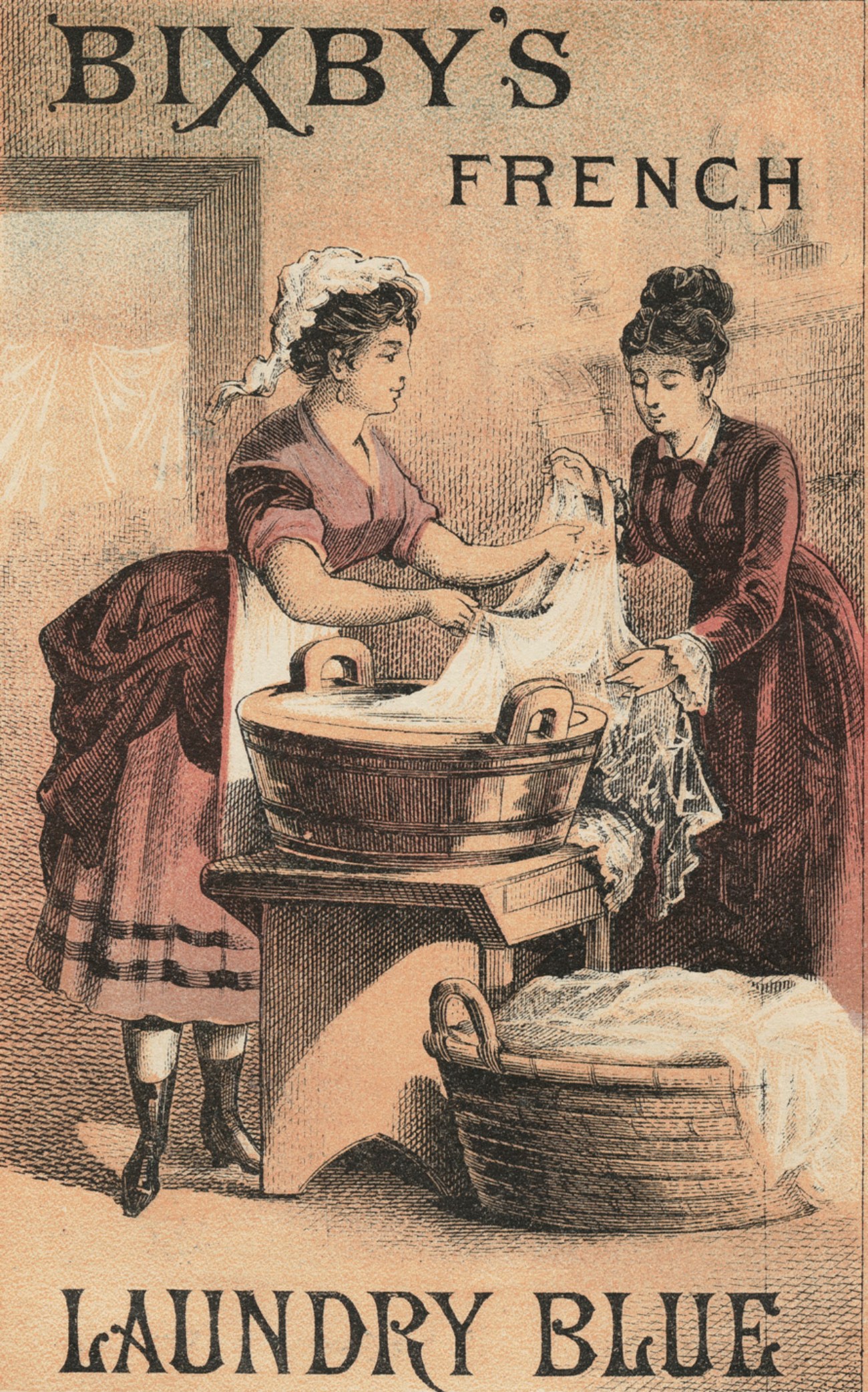
Dyeing
Clothes that could no longer be covered with bluing or that had staining could be dyed. Some folks still do this today, but it’s much less common than it once was. One problem was that in the 1800s (and earlier) women were expected to wear long skirts, which naturally got dirty around the hem when they glances the floor or ground. Dyeing them was an easy way to make these brown or black stains vanish.
Another method was to add another strip of fabric around the bottom if the hem was too stained or damaged.
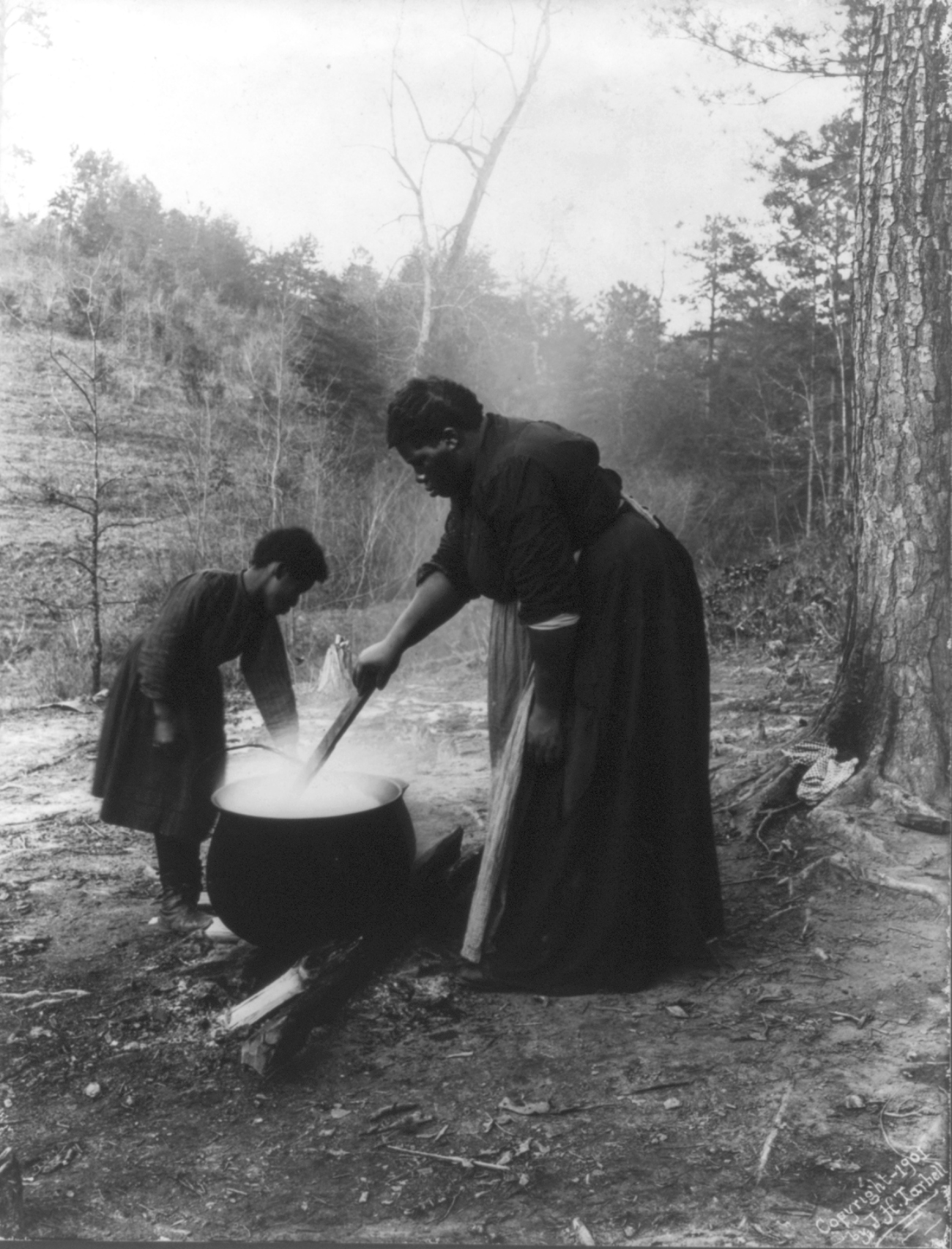
Wallpaper
Wallpaper in general was used to hide dirty or molding walls in poorer houses. What started out as a luxury wall decoration was cheaper after the Industrial Revolution, meaning it could sometimes be used in homes that didn’t have lots of money to spare.
In the time before scrubbable wallpapers it was believed that papers with either dark, muted colors or a dot pattern (known as a pin ground) to the background would help hide fly marks or other spots.
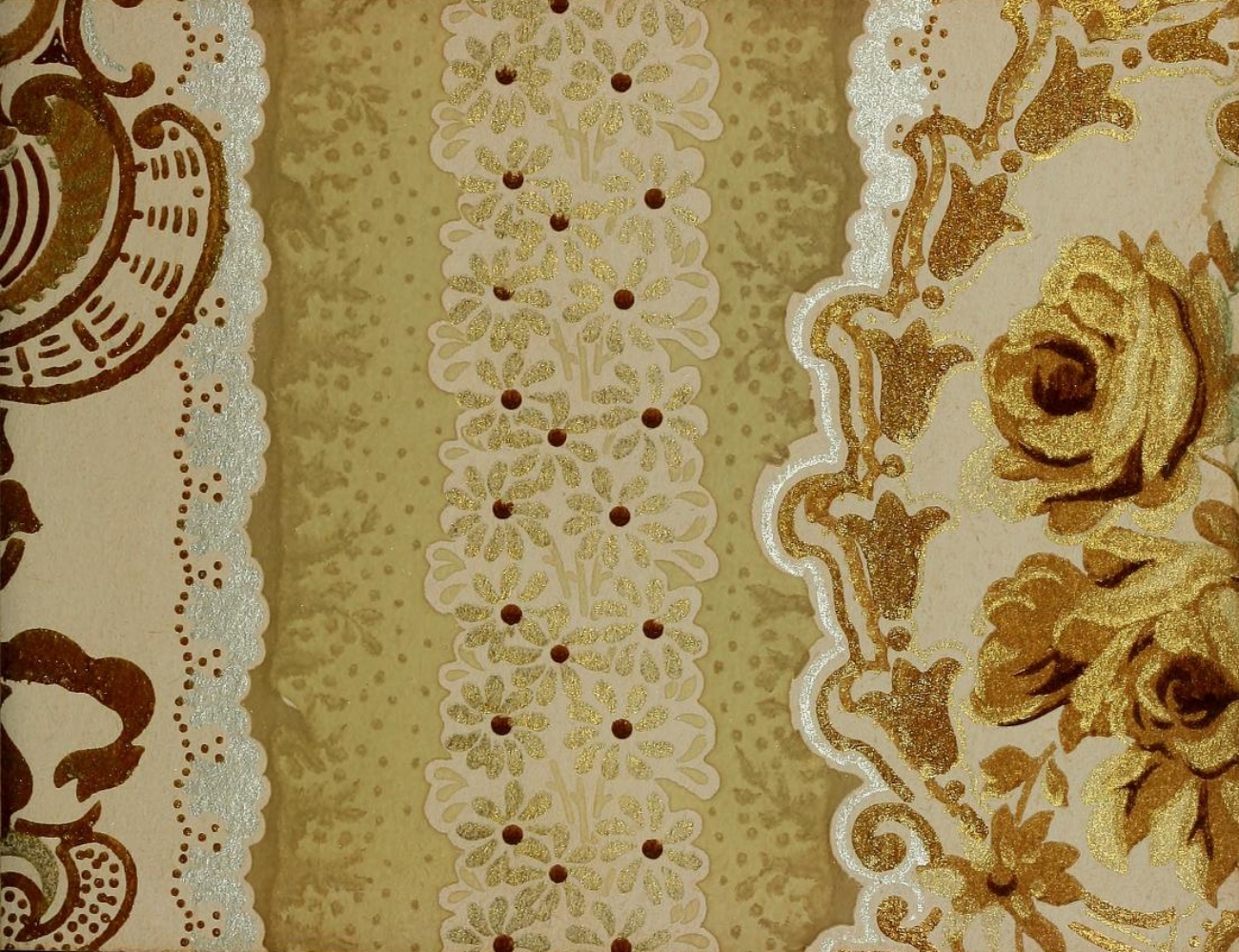
Floor Cloths
Even if one couldn’t afford rich rugs of silk and wool, painted rugs were attainable for many. These heavily oiled, painted, and lacquered pieces of canvas added lots of cheer to a space and also hid dirt. The tradition for painted floor cloths came from Europe and was imported along with the first immigrants to the US. Colonial patterns for floor cloths often had a stenciled or tole style to them. But, in the days of Westward expansion many pioneer artists would have free-handed designs onto their floor cloths.
These durable cloths were good for sod homes and lean-tos since they could make a dirt floor kitchen feel more like a sanitary wooden or linoleum floor in a less-humble house. They could also be wiped clean unlike wool rugs. By some accounts old sails were sometimes cut up to become floor cloths like these. There was even a market for metal edgings to finish them off and make them extra durable.
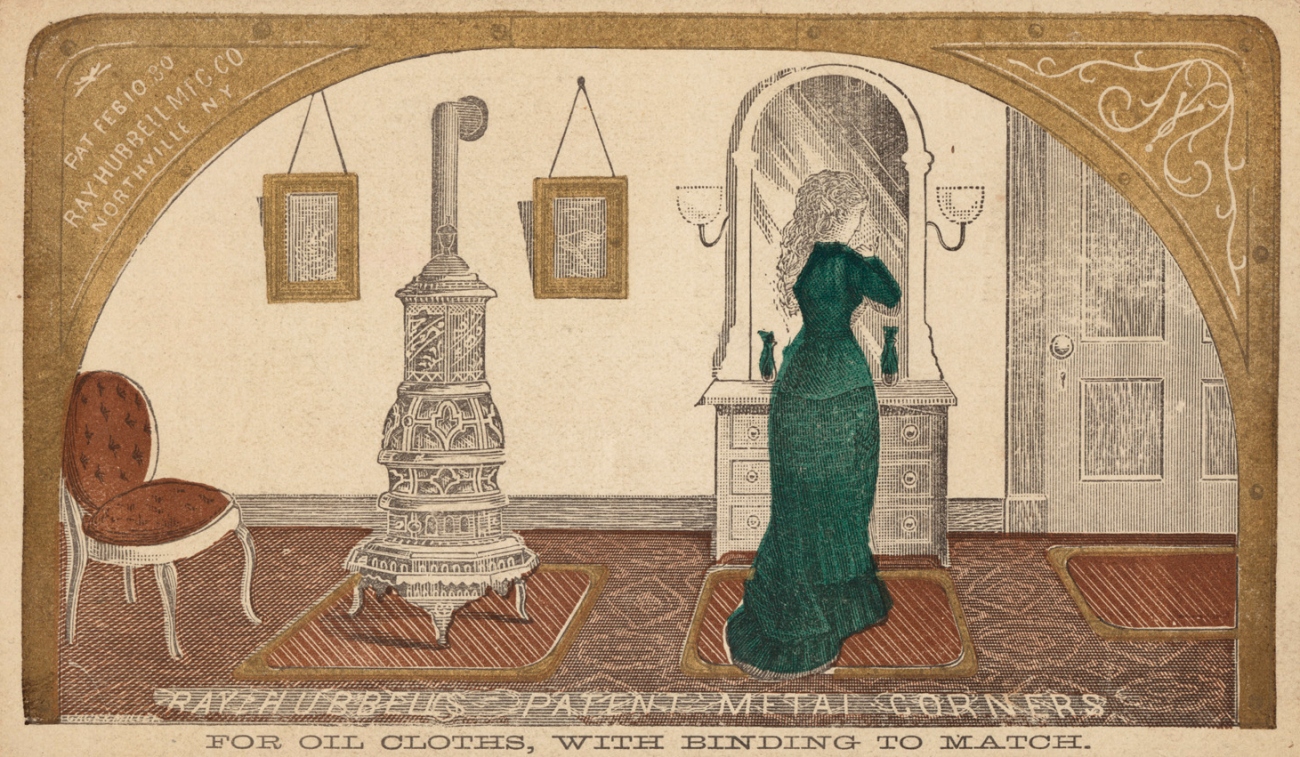
Stove Blacking
Iron stoves were the heart of the house in the 1800s and early 1900s. They could be big or small, but their dusky black color was a sign of home for many. They not only heated the room (or the whole house), but they were the cooktop as well as the boiler for hot water. When water or grease spilled it could cause discoloration or even rust. To cover this up stove blacking was applied regularly. This was solution often made from graphite (called plumbego in the 1800s). It was often part of the spring cleaning, but needed to be done often in order to maintain that even color.
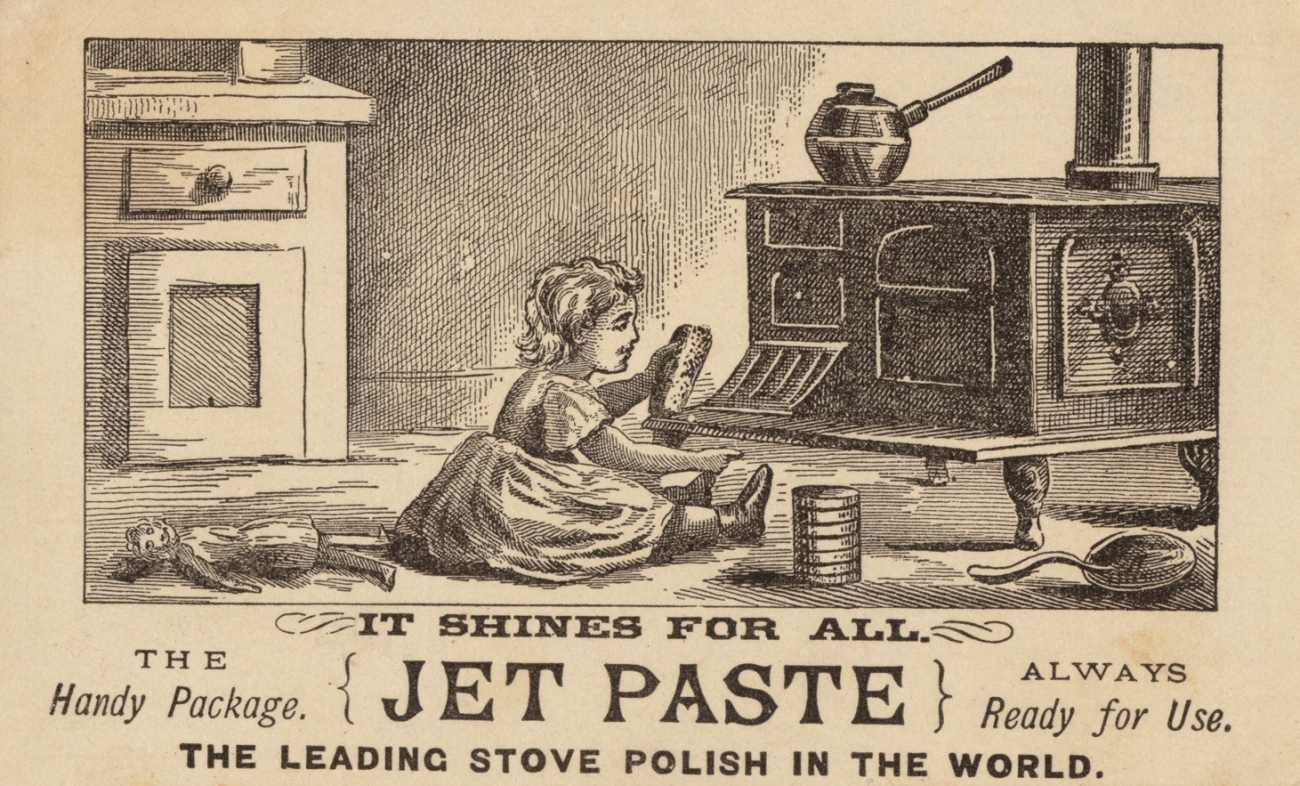
SKM: below-content placeholderWhizzco for DOT

